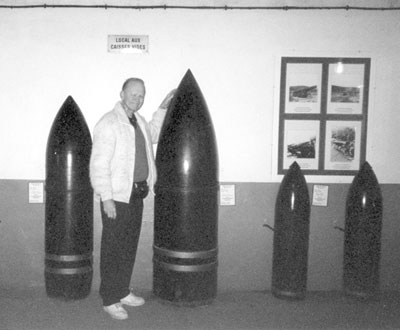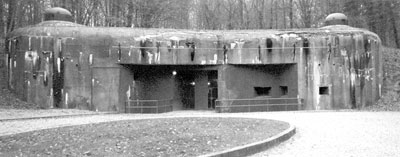Inspecting a Maginot Line fortress
Over the years, I heard and read a lot about the Maginot Line, and I always wanted to visit the most impressive part of it. Because it extended from Luxembourg to Switzerland, with another section from Switzerland to the Mediterranean, I needed some help and turned to the French Government Tourist Office. The problem was that the tourist office couldn’t (or wouldn’t) answer simple questions like “Where is the best site to visit?” and “When is the best time to go?” I was referred to a website which was mostly in French, making it difficult to find answers.
After three years of contacting the tourist office every time I went to Europe, my luck turned when they gave me the name of Marc Halter, president of the Maginot Line Association, a tremendous source of information. He can be contacted by e-mail at haltermarc@evc.net. Additional information came from the association’s webpage, www.lignemaginot.com, which has an English section.
Following Mr. Halter’s directions, in December ’03 my wife, JoAnn, and I drove on the A4 from Paris to Haguenau, about 15 miles north of Strasbourg. Haguenau is the gateway to the Maginot Line’s most impressive installation: Schoenenbourg fortress.
Because we arrived at Haguenau after 5 p.m., we decided to stay at the Campanile Hotel (Campanile Haguenau, 129 Route de Strasbourg, Haguenau, Bas-Rhin, 67500 France; visit www.campanile-haguenau.activehotels.com), part of an extensive chain, for two nights. The accommodations were clean, comfortable and reasonably priced at €59 (near $74) a night. The Campanile also has a restaurant, but we didn’t eat there, opting instead for a feast, in our room, of pâté, ham, cheese, bread, pastry and wine from the local supermarket.
When driving to Schoenenbourg, take N340, direction Wissembourg, from Haguenau. Driving about 30 minutes along winding but well-marked roads takes you to the fort. The entrance is through a 2-story block house with 9-foot-thick poured-concrete walls. There is no indication of the 1½-mile network of tunnels (some as deep as 90 feet) and the facilities to house hundreds of soldiers.
Aboveground at various places are cannons and machine guns, still in working order. There’s also an armory, where I saw some of the guns up close. One turret was reinforced with 80 tons of steel and yet was so well balanced that the cannon could be moved hydraulically with one hand, which I did.
The fort, which took four years to build, has a complete self-contained electrical and communications system; kitchens; office; enlisted quarters; repair facilities; a private well for unlimited water; space for enough food and ammunition to withstand a 6-month siege, and an air filtration system so well designed it could withstand a poison gas attack. There are even some Mickey Mouse drawings from the 1930s.
I walked the entire complex, but JoAnn could see only part because her bad hip prevented her from climbing the steep stairs.
Schoenenbourg did come under German attack by Stuka dive-bombers and infantry, but because of the thick walls it sustained practically no damage. Some of the holes from bombs and machine gun fire are still on the building.
French resistance was so fierce that the garrison refused to surrender even after hostilities had ceased. They finally capitulated several weeks later on direct orders from the French government, but not before destroying the codes for sighting and firing the artillery.
After World War II ended, Schoenenbourg was restored by private interests. It now attracts about 40,000 visitors a year. Guided tours are in five languages, including English. The tour lasts 1½ hours, but you can stay longer, if you wish. Admission is €5. If you plan to visit from December to February, check for times.
Our guide explained that the French people as well as the government really want to forget about the Maginot Line, because they feel it caused France’s defeat. (The truth is that it was only designed to hold up the Germans for at least a week until the French could mobilize.) That may explain why it took me nearly three years to learn about Schoenenbourg, even though on two other occasions we were within 20 miles of it and never knew.
Less than a half mile from the fort is an excellent and reasonably priced restaurant, L’Auberge de la Ligne Maginot. JoAnn and I both had a stew for €8 each which was delicious and almost more than we could eat.
For anyone interested in military history, we highly recommend a visit to Schoenenbourg. For those who really want to see more than one site, consider visiting, less than 10 miles away, Lembach, which we didn’t have time to visit but which comes highly recommended. Its webpage is www.ot-lembach.com.
JoANN & BILL KOFOED
Ft. Pierce, FL


